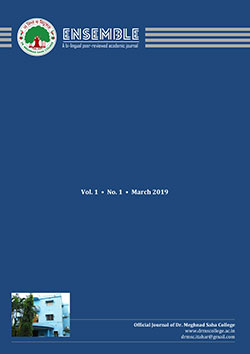Covid-19 and Domestic Violence in Kashmir: Gender Voices
Abstract
Domestic violence has become a global pandemic long before the COVID-19 outbreak. It is claimed that due to covid induced lockdown a continual rise is spotted in the numbers of sick people; growing unemployment, increased anxiety and financial stress, scarcity of community resources etc. Resultantly, these factors are believed to have set the stage for an exacerbated hype in domestic violence cases. Experts have characterized the “invisible pandemic” of domestic violence as a “ticking time bomb” or a “perfect storm”. The connection between physical insecurity and economic insecurity is claimed to be tangible for people who might be less attuned to domestic violence. There is now a unique opportunity to shed light on the economic dimensions of domestic and gender-based violence. Indeed, a thorough examination and deep introspection of the impact of the novel diseases need to be mapped out. However, it needs to be noted down that the present study is limited to the region of Kashmir. At the same time rising domestic violence against women in Kashmir Valley during the pandemic lockdown of COVID-19 is matter of concern and need to be highlighted and simultaneously efforts should be made (on part of Government, NGOs or others) to contain such violence. A detailed study of such pandemic accelerated gender-based violence seems a must. A study which could possibly map out the role of different factors ranging from age, education, job, etc. to others on the acceleration or maximization of domestic violence in Kashmir amidst of pandemic. After taking all those pros and cons into consideration, the present study set itself to examine the relationship between covid-19 and domestic violence in Kashmir. All the ten districts of the Kashmir region were included in study, and among each district a maximum of 21 participants were selected. To reach the desired end and draw the results, the present paper has undertaken an online questionnaire.
Keywords: Women, Exploitation, Hardships, Vulnerability, Conflict
https://doi.org/10.37948/ensemble-2021-0301-a019
Views: 694



